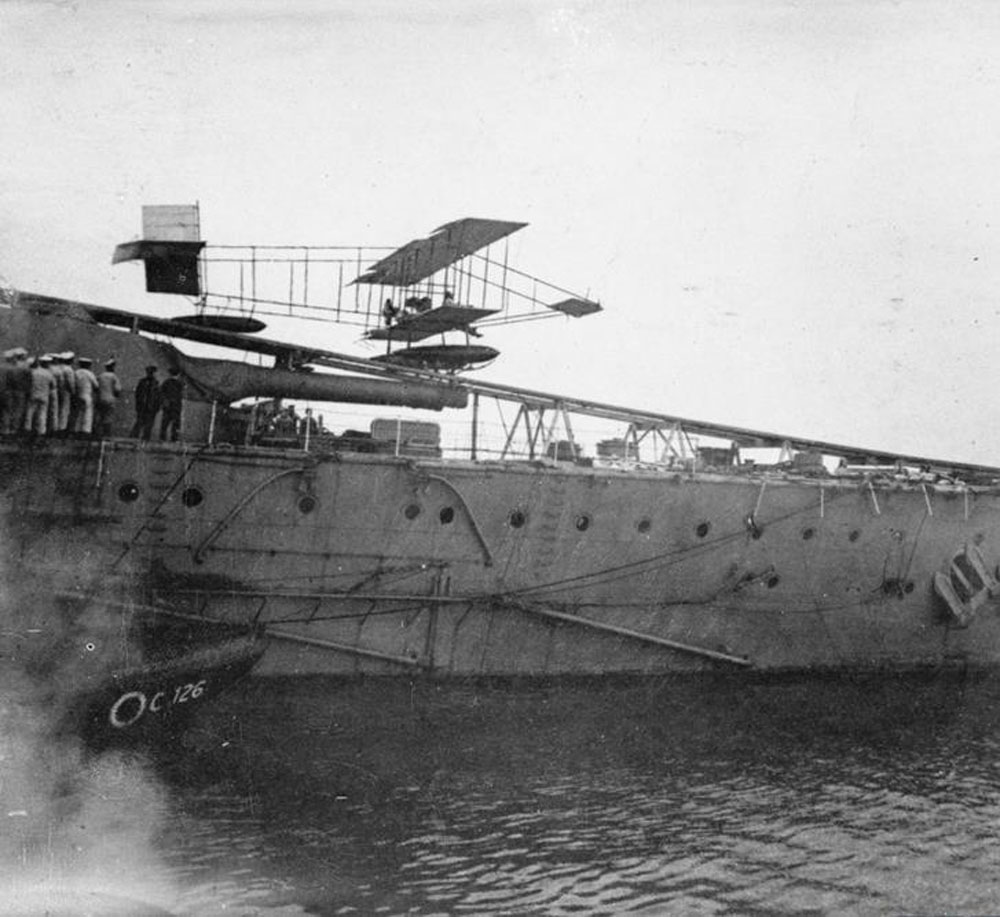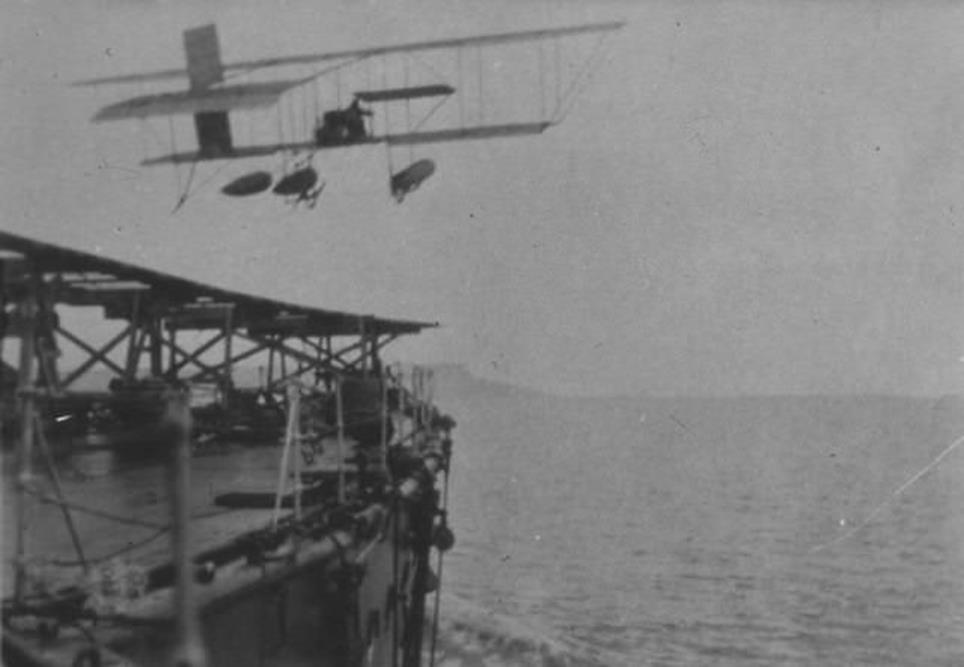1912 – First British Take-off from a Ship
| < First Navy Pilots | Δ Index | East Coast Air Stations > |

On 10th January 1912, Samson made the first British take-off of a plane from a ship. He flew a Short S.38 from a special ramp erected on the foredeck of HMS Africa, moored off the Isle of Grain in the mouth of the Thames.
Later that year he repeated the feat, this time from a moving ship.
For the 1912 Royal Fleet Review at Weymouth, HMS Hibernia was fitted with a similar flying off platform. On the 2 May 1912 Lieutenant Samson, flying a Short-Sommer pusher biplane S.38, No. T.2, made the first ever take-off from a moving ship, The Hibernia steaming at 10.5 knots. Samson took off when the Hibernia was three miles off Portland Harbour. He rose to 45ft and then landed at the eastern end of Lodmoor.

The success of these early experiments with what were then known as “hydroplanes”, and the growing threat of war in Europe led to the Government’s decision to deploy a chain of air stations associated with the naval bases along the east coast from Orkney to the Thames.
The first naval air station in Scotland was sited at Carlingnose Beach, or Port Laing, in North Queensferry, close to the site of what would become the new naval base at Rosyth (work had commenced in 1909, completion was scheduled for 1916.)
| < First Navy Pilots | Δ Index | East Coast Air Stations > |